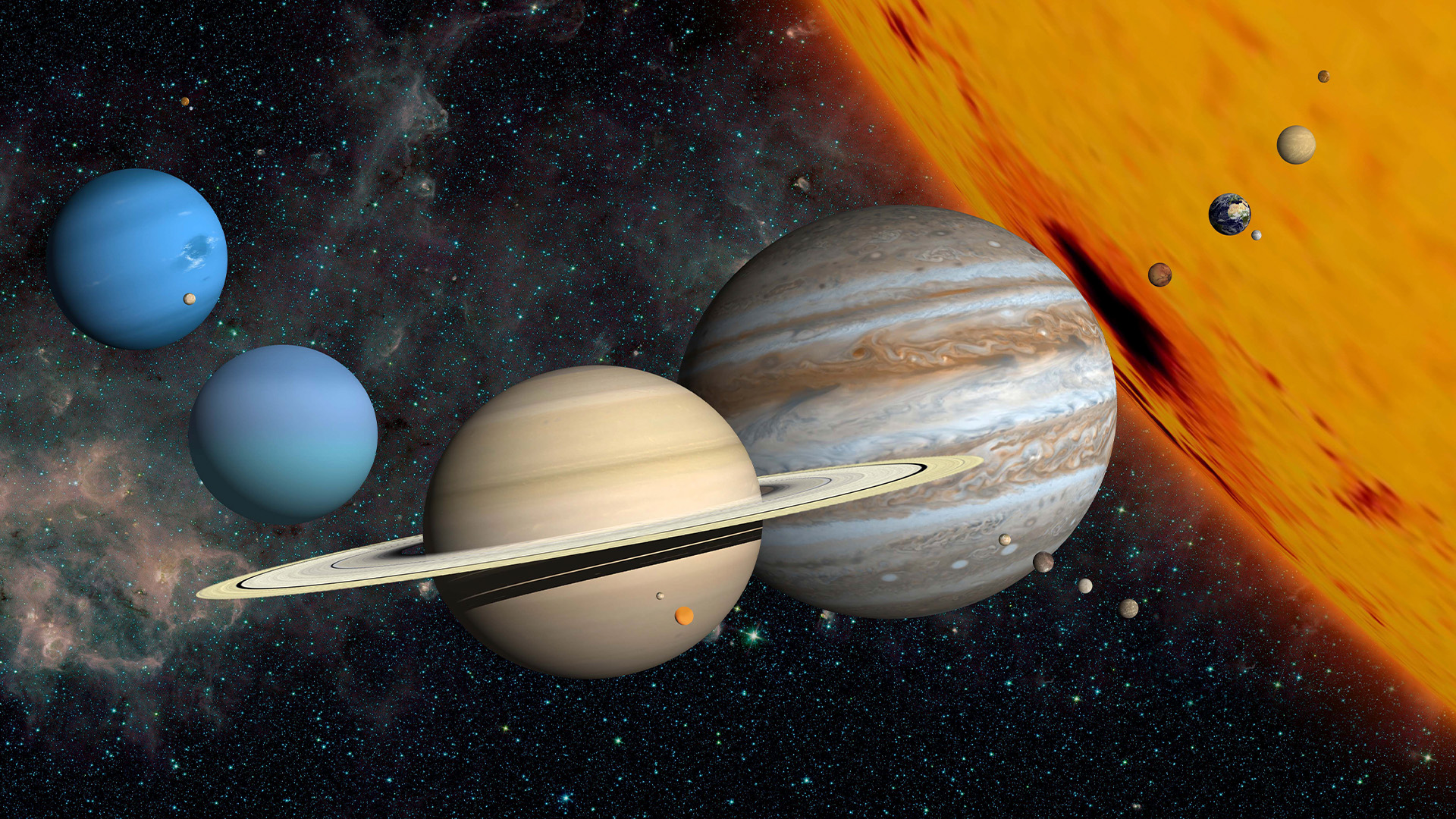A 'parade of planets' is coming on June 3. Here's what you can actually expect to see.
Six worlds will align for a "planetary parade" on June 3, although only a few of them will be visible to the naked eye. Here's what you need to know about the rare alignment.

Six of the planets in our solar system — Mercury, Mars, Jupiter, Saturn, Uranus and Neptune — are about to align on June 3 in what some media outlets are dubbing a "parade of planets." The sight is predicted to be best visible an hour before sunrise on June 3 and June 4.
But, despite a flurry of breathless coverage promising otherwise, you won't be able to see all six planets as they rise before dawn. What you can see depends on a variety of factors, including how early you wake up, how much light pollution you have to contend with, and whether you've got a pair of stargazing binoculars or a good small telescope to aid you.
With that in mind, up to four of the planets on display (Mercury, Jupiter, Uranus and Neptune) may either be too dim to see with the naked eye or masked by the glare of the rising sun, skywatching journalist Jamie Carter wrote for Forbes.
The remaining planets — Mars and Saturn — will be visible, though they will likely appear dim in the predawn hours, when the alignment is predicted to occur, Carter added. (Mars and Saturn have actually been visible just before dawn all month long, rising steadily higher each morning in May, Earthsky.com notes.)
Related: Have all 8 planets ever aligned?
However, in a recent video from the National Science Foundation, astrophysicist Joe Pesce paints a more optimistic picture of the alignment.
"It's likely that we'll be able to see Mercury, certainly Jupiter, Mars and Saturn," Pesce said. "Uranus and Neptune are also involved, but you'd need binoculars or a telescope to be able to see those two planets."
Pesce added that the alignment will be visible for a few days before and after June 3, also. And if you don't have a great view of this particular planetary parade, "there's another event in late August, and several predicted for 2025," Pesce said.
All of this means that it may be risky to get up at the crack of dawn to see the upcoming parade of planets, with as many as four of the six planets involved possibly obscured in some way. Take your local weather conditions and light pollution into account before making your plans.
Sign up for the Live Science daily newsletter now
Get the world’s most fascinating discoveries delivered straight to your inbox.
For those who do sacrifice their sleep to catch a glimpse of the alignment, you won’t be entirely let down. That's because on the nights in question, a beautiful crescent moon will be visible near Mars and Saturn, Carter notes.
If you're curious about this alignment, or other upcoming ones, Time and Date and Stellarium are two great online tools for finding viewing dates and times based on where you are in the world, and will even show you the locations of the four hidden planets on June 3. On mobile phones, the Sky Tonight is a free app that will do the same job.
Editor's note: This article was updated on May 31 to include new predictions from the National Science Foundation.

Ben Turner is a U.K. based staff writer at Live Science. He covers physics and astronomy, among other topics like tech and climate change. He graduated from University College London with a degree in particle physics before training as a journalist. When he's not writing, Ben enjoys reading literature, playing the guitar and embarrassing himself with chess.










